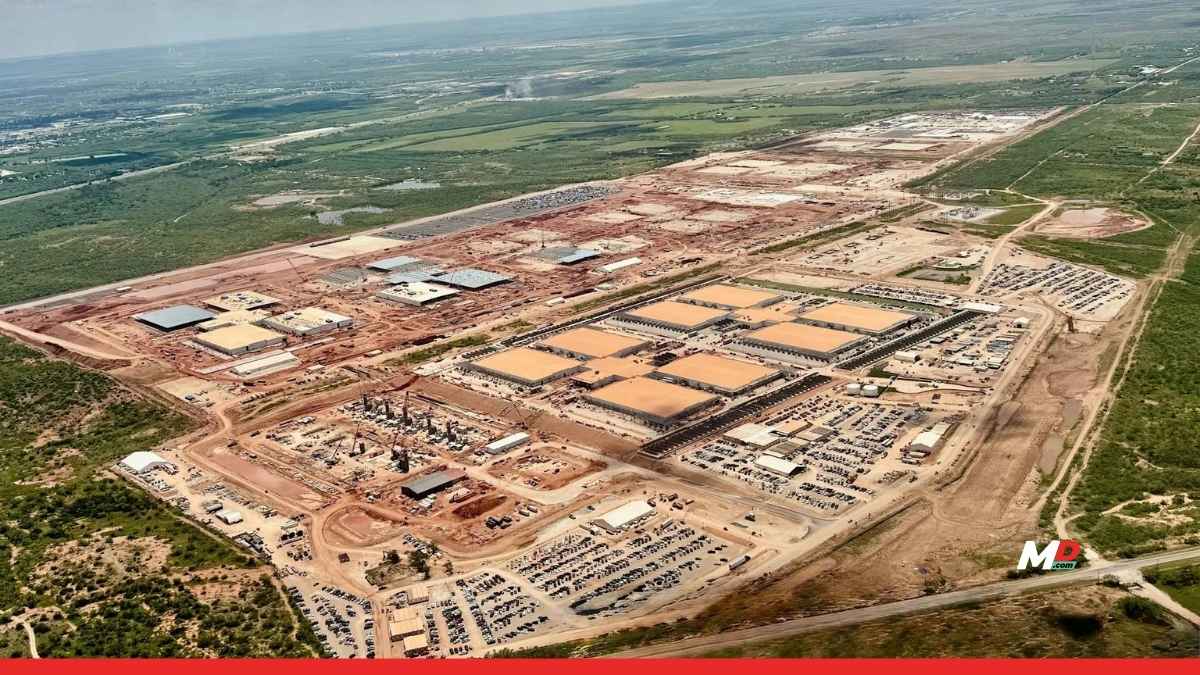Published
5 months agoon

In early 2025, the world watched as OpenAI, SoftBank, and Oracle unveiled the Stargate project at the White House—a $500 billion pledge to construct the world’s largest artificial intelligence infrastructure in the U.S. President Trump, OpenAI CEO Sam Altman, SoftBank’s Masayoshi Son, and Oracle’s Larry Ellison stood on stage, vowing to build 10 gigawatts of cutting-edge data center capacity, create 100,000 jobs, and set a new global standard for artificial intelligence. Stargate was branded as a moonshot: audacious, transformative, and “America’s answer” to global AI competition.
The sheer scale inspired awe: gigawatts of AI power slated to run millions of advanced chips, powering everything from consumer AI devices to defense. This was the world’s most ambitious AI infrastructure proposal, its urgency underscored by geopolitical pressure and economic potential. The project, it was said, would not only transform technology but reindustrialize swathes of America from Texas to Ohio.
Six months later, however, the story behind Stargate has taken a sobering turn. Despite the grandiose launch, Wall Street Journal’s exclusive revealed that Stargate has yet to fully materialize. The anticipated flurry of construction and investment remains largely in the planning stage, and critical agreements—especially those involving SoftBank—have stalled. As of July, not a single, fully realized Stargate-branded data center deal had been completed, and disagreements on location, partner roles, and energy supply lingered.
Reporting shows that SoftBank and OpenAI have been at odds over essential elements of the venture. Differences in preferred sites for the mega-centers, conflict over vendor selection (especially whether to rely on SoftBank-backed energy resources), and divergent approaches to governance and capitalization have all contributed to inertia. For all the initial bluster, the near-term deliverable has been drastically scaled back: the revised, immediate ambition is now construction of a relatively modest new data center—likely in Ohio—by year’s end.
Faced with uncertainty on Stargate, OpenAI has opted not to wait. It has instead negotiated a landmark deal with Oracle, securing a $30 billion-per-year contract to rapidly deploy 4.5 gigawatts of new U.S. data center capacity—enough to power millions of the latest GPUs and represent the largest single cluster for AI training in the world.
This deal is not a full retreat from Stargate—indeed, Oracle’s expansion is technically part of the Stargate pipeline—but it shifts the original partnership’s power dynamics. With SoftBank sidelined for now, Oracle and OpenAI are moving ahead on infrastructure projects in Texas, Michigan, Wisconsin, Wyoming and more, adding to the Stargate I site in Abilene. These sites, including Abilene, are essential to OpenAI’s mission to maintain leadership in the global AI arms race, and will create more than 100,000 jobs in the coming years.
What’s significant is that OpenAI’s progress with Oracle brings the total capacity under development to more than 5 gigawatts—already close to the initial target Stargate set for itself by 2026. Oracle’s agility and established infrastructure know-how have proven a bulwark against the political and logistical gridlock hampering the SoftBank tie-up.
Into this backdrop stepped Elon Musk, Tesla and xAI founder—and former OpenAI ally turned chief critic. Musk has repeatedly voiced skepticism about the viability of the $500 billion Stargate promise, lampooning the funding and logistical claims of his former colleagues. Responding publicly (and pointedly) to OpenAI’s plan to “immediately deploy” vast sums, Musk summarized his doubts: “They don’t actually have the money”.
The deepening personal and professional acrimony between Musk and Altman has been as public as it is unvarnished. Musk, still battling OpenAI in court over the company’s pivot to a for-profit structure, has suggested that OpenAI’s cash and commitments fall far short of their ambitions and has disparaged its ability to deliver on government and Big Tech promises. Musk’s presence in the high-stakes AI sector, and his relentless criticism, continue to cast a long shadow on Altman’s efforts to paint a picture of inevitability around Stargate or any substitute deal.
This turbulence around Stargate comes amidst a broader scramble for computational power:
Meanwhile, OpenAI’s partnership with Oracle is expected to create a domino effect in U.S. reindustrialization, with construction and tech jobs, new demand for custom energy solutions, and more robust digital infrastructure. This, at scale, is the promise that first animated Stargate—but it’s arriving piecemeal, rather than in one unified, transformative leap.
The Strategic Takeaway
OpenAI and Oracle’s accelerated deal showcases how business pragmatism and technical necessity can override even the loftiest of original visions. While Stargate’s original ambition remains a benchmark, it is collaboration, flexibility, and focus—qualities amply demonstrated in the Oracle deal—that are currently determining which players move from press-release promises to tangible results.
This is a lesson for every stakeholder in the AI ecosystem: Vision is vital, but execution, funding credibility, and alignment of interests win in the end. The data center race is on, but it will be won by those who keep moving forward, even if it means dialing back on initial grandeur.


Justdial releases ‘How India Searched in 2025’ report, Decoding India’s evolving consumer behaviour


From Intention to Action: Health Priorities in a High-AQI, High-Pressure Environment


The Future of Air: How 2026 Could Transform India’s Urban Breathability


Building a BRIDGE: The NTT Global Data Centers way


3 movies that make for the perfect cinematic countdown to NYE


Indian economy officially becomes fourth-largest in the world, but are we really rich?

